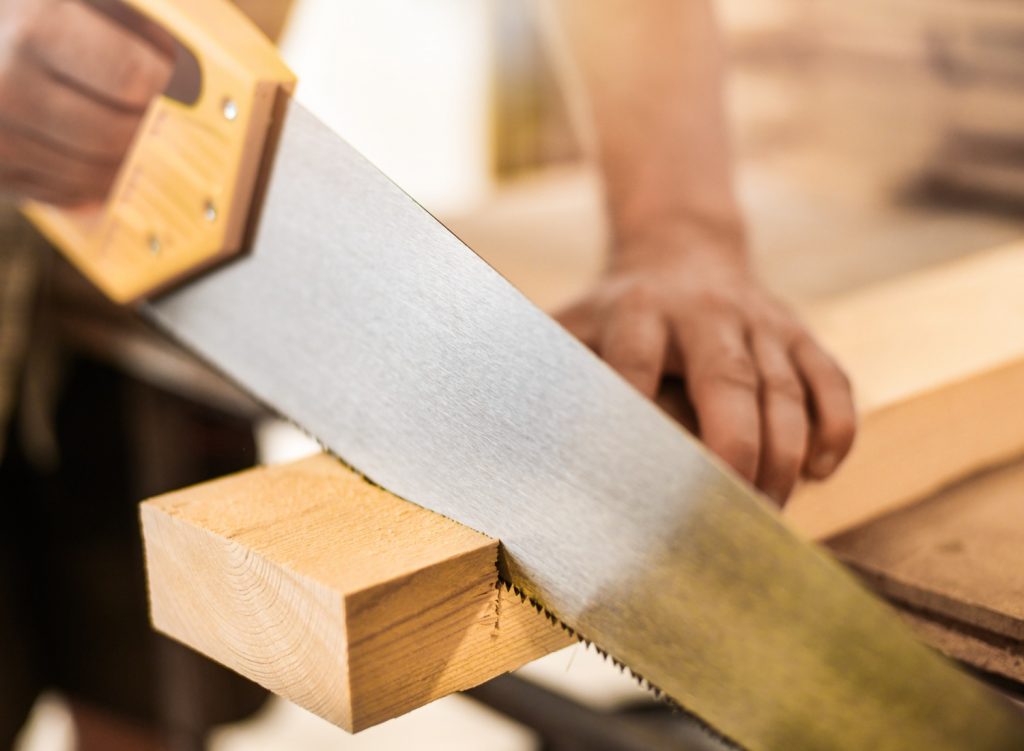4 Types of Hand Saws Every Woodworker Should Own

In the digital era, where power tools have largely dominated the scene, hand saws remain an indispensable ally to the woodworker. Their precision, control, and quiet operation make them a pleasure for many tasks where power saws might be overkill or less precise. For anyone serious about woodworking, four types of hand saws are essential for a well-equipped workshop. Let’s explore these must-have tools and how they fit into the craft of woodworking.
1. The Rip Saw
A rip saw is designed specifically for cutting wood parallel to the grain. The shape of the teeth is like chisels, which slice through the wood fibers quickly and efficiently. The defining characteristic of a rip saw’s teeth is their flat front edges that act like tiny wood chisels. This type of wood saw is ideal for tasks such as sizing lumber or creating joints where a smooth finish isn’t the primary concern but rather speed and efficiency.
When using a rip saw, let the tool do the work. Apply a steady forward force and use long, smooth strokes. Since you’re working with the grain, you’ll find that a sharp rip saw can move through wood with surprising ease. This saw is about the power of the cut, not the finesse, which makes it perfect for breaking down larger pieces of stock quickly.
2. The Crosscut Saw
As the name suggests, the crosscut saw is for cutting wood perpendicular to the grain. The design of the teeth on a crosscut saw act like knives. They sever the wood fibers rather than chiseling through them like a rip saw. With its smaller, more numerous teeth set at an angle (known as beveling), it creates a finer cut than the rip saw, suitable for when the appearance of the cut edge is more important.
One key to using a crosscut saw effectively is to start the cut with a backward stroke to establish a groove. Then, proceed with smooth, even forward strokes, allowing the saw to cut without undue downward pressure. This saw is all about precision and is ideal for finishing work where a clean cut is critical.
3. The Back Saw
The back saw is characterized by a stiffened rib on the edge opposite the cutting edge, which gives the saw its name. This rib, typically brass or steel, keeps the saw blade straight during cuts. Back saws include various types, such as dovetail saws, tenon saws, and miter saws, and are for fine joinery work where precision is paramount.
The stiffness of the back saw allows for control when cutting dovetails and tenons, ensuring that the cuts are straight and accurate. Because these saws are for delicate work, a light touch and patience are important. Use a miter box or a dovetail guide to help guide the cut and ensure your angles are correct.
4. The Coping Saw
The coping saw is the artist of the saw family, with a thin blade stretched across a U-shaped frame, used for intricate and detailed work. The blade is easily removable, allowing you to thread it through a hole in the wood and make interior cutouts without an entry point from the edge. The fine teeth and slim blade allow for detailed and precise cuts, which is why it’s commonly used for coping moldings and creating custom parts.
Maintaining control is key to using a coping saw—don’t rush the cut. Let the saw move smoothly around the pattern or joint profile you’re cutting out. Since the blade is thin and fragile compared to other saws, a gentle approach is essential to prevent breaking the blade.
Conclusion
Each of these saws plays a unique role in the woodworker’s toolbox, providing the capability to execute a wide range of tasks that a wood saw should perform—from the brute strength and quick action of the rip saw to the finesse and precision of the coping saw. Owning and mastering these hand saws adds versatility to your woodworking skills and connects you to the traditional roots of the craft.
Remember, the quality of your work is often determined not by the number of tools you have but by your mastery of them. So, choose quality saws, keep them sharp, and practice your technique. With these four types of hand saws at your disposal, you’re well-equipped to tackle nearly any woodworking project that comes your way.
